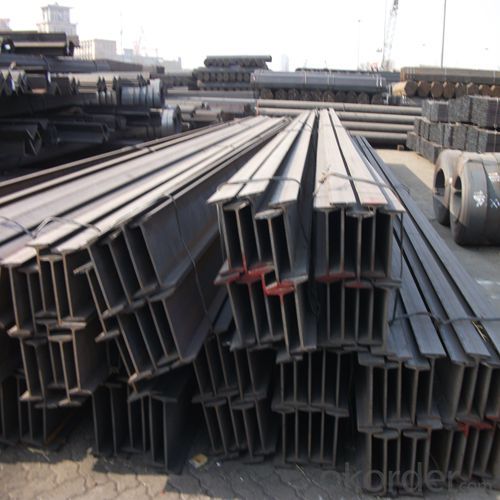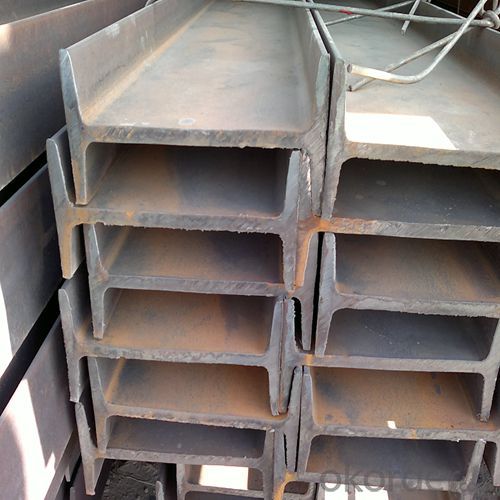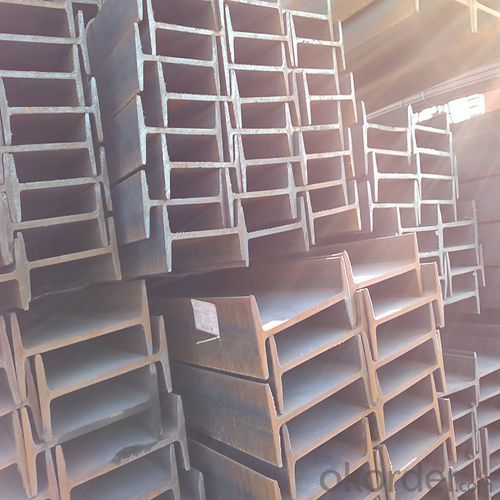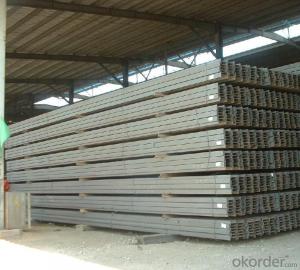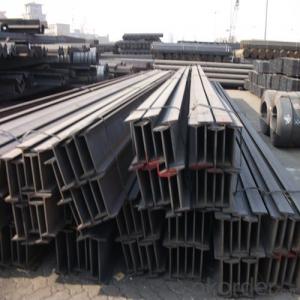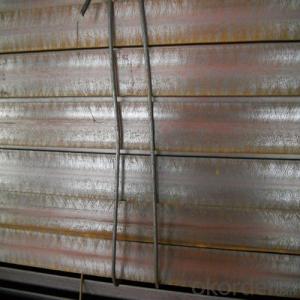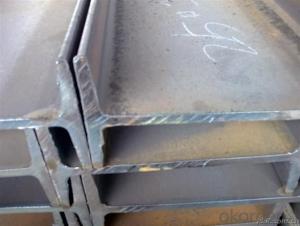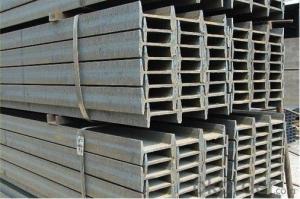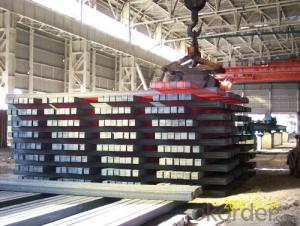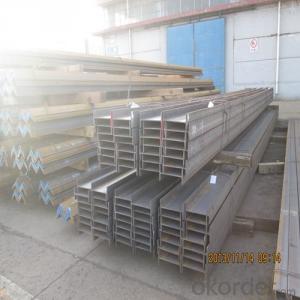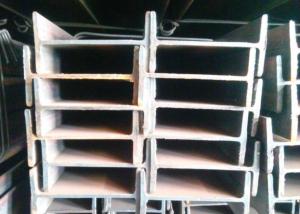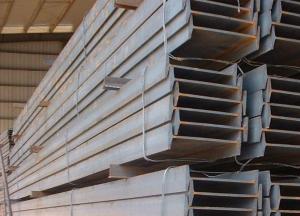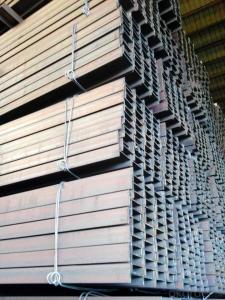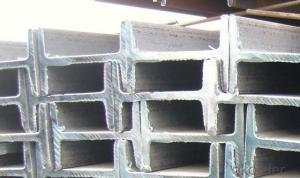STRUCTURE STEEL HOT ROLLED I-BEAM HIGH QUALITY Q235
- Loading Port:
- Tianjin
- Payment Terms:
- TT OR LC
- Min Order Qty:
- 50 m.t.
- Supply Capability:
- 50000 m.t./month
OKorder Service Pledge
OKorder Financial Service
You Might Also Like
Product Description:
1. Product name: IPE/IPEAA Beam Steel
2. Standard: EN10025, GB Standard, ASTM, JIS etc.
3. Grade: Q235B, A36, S235JR, Q345, SS400 or other equivalent.
4. Length: 5.8M, 6M, 9M, 10M, 12M or as your requirements
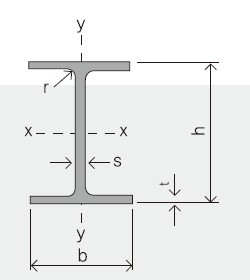
Section | Standard Sectional Dimensions(mm) | ||||
h | b | s | t | Mass Kg/m | |
IPE80 | 80 | 46 | 3.80 | 5.20 | 6.00 |
IPE100 | 100 | 55 | 4.10 | 5.70 | 8.10 |
IPE120 | 120 | 64 | 4.80 | 6.30 | 10.40 |
IPE140 | 140 | 73 | 4.70 | 6.90 | 12.90 |
IPE160 | 160 | 82 | 5.00 | 7.40 | 15.80 |
IPE180 | 180 | 91 | 5.30 | 8.00 | 18.80 |
IPE200 | 200 | 100 | 5.60 | 8.50 | 22.40 |
IPE220 | 220 | 110 | 5.90 | 9.20 | 26.20 |
IPE240 | 240 | 120 | 6.20 | 9.80 | 30.70 |
IPE270 | 270 | 135 | 6.60 | 10.20 | 36.10 |
IPEAA80 | 80 | 46 | 3.20 | 4.20 | 4.95 |
IPEAA100 | 100 | 55 | 3.60 | 4.50 | 6.72 |
IPEAA120 | 120 | 64 | 3.80 | 4.80 | 8.36 |
IPEAA140 | 140 | 73 | 3.80 | 5.20 | 10.05 |
IPEAA160 | 160 | 82 | 4.00 | 5.60 | 12.31 |
IPEAA180 | 180 | 91 | 4.30 | 6.50 | 15.40 |
IPEAA200 | 200 | 100 | 4.50 | 6.70 | 17.95 |
Applications of IPE/IPEAA Beam Steel
IPE/IPEAA Beam Steel are widely used in various construction structures, bridges, autos, brackets, mechanisms and so on.
Packing & Delivery Terms of IPE/IPEAA Beam Steel
1. Package: All the IPE/IPEAA Beam Steel will be tired by wire rod in bundles
2. Bundle weight: not more than 3.5MT for bulk vessel; less than 3 MT for container load
3. Marks:
Color marking: There will be color marking on both end of the bundle for the cargo delivered by bulk vessel. That makes it easily to distinguish at the destination port.
Tag mark: there will be tag mark tied up on the bundles. The information usually including supplier logo and name, product name, made in China, shipping marks and other information request by the customer.
If loading by container the marking is not needed, but we will prepare it as customer request.
4. Shipment: In containers or in bulk cargo
5. Delivery time: All the IPE/IPEAA Beam Steel will be at the port of the shipment within 45 days after receiving the L/C at sight ot the advance pyment.
6. Payment: L/C at sight; 30% advance payment before production, 70% before shipment by T/T, etc.
Production flow of IPE/IPEAA Beams
Material prepare (billet) —heat up—rough rolling—precision rolling—cooling—packing—storage and transportation
- Q: How do I calculate the difference between rail steel and angle steel, channel steel and I-beam?
- Ordinary I-beam, light I-beam flange is variable cross-section, depending on the thickness of the web, the external thin; H steel: HW, HM, HN, HEA, HEB, HEM and so on, the flange of I-beam is a uniform sectionOrdinary I-beam, lightweight I-beam has formed the national standard, the common 10# I-beam is equivalent to the Internet I100 (such as 10# also channel equivalent channel (U100) for the implementation of the standards of different countries, which have subtle differences in their specifications)H type I-beam is also called wide flange I-beam, HW, HM, HN originated from European standards, HEB is the German standard of I-beam, of which HW, HN I-beam has been widely used in our country and production. HEA HEB HEM will be seen on many German designs and is hard to buy on the domestic market. In the domestic steel structure engineering, if the quantity is few, then may use the specification steel plate to carry on the welding splicing. In the case of large quantities, it is usually considered to use mechanical properties comparable to those of HW and HN steel.
- Q: The tunnel arch sprayed concrete I-beam to dismantle after?
- No, I don't need it! I am a manufacturer of tunnel shotcrete and anchor support equipment. If necessary, give me a contact information! The price will be cheaper than that on the market!
- Q: Standard for welding quality of I-beam
- I-beam is mainly divided into ordinary I-beam, light I-beam and H steel three.Ordinary I-beam, light I-beam flange is variable cross-section, depending on the thickness of the web, the external thin; H steel: HW, HM, HN, HEA, HEB, HEM and so on, the flange of I-beam is a uniform sectionOrdinary I-beam, lightweight I-beam has formed the national standard, the common 10# I-beam is equivalent to the Internet I100 (such as 10# also channel equivalent channel (U100) for the implementation of the standards of different countries, which have subtle differences in their specifications)H type I-beam is also called wide flange I-beam, HW, HM, HN originated from European standards, HEB is the German standard of I-beam, of which HW, HN I-beam has been widely used in our country and production. HEA HEB HEM will be seen on many German designs and is hard to buy on the domestic market. In the domestic steel structure engineering, if the quantity is few, then may use the specification steel plate to carry on the welding splicing. In the case of large quantities, it is usually considered to use mechanical properties comparable to those of HW and HN steel.
- Q: Can steel I-beams be used for swimming pool construction?
- No, steel I-beams are not typically used for swimming pool construction. Swimming pools are typically constructed with materials such as concrete or fiberglass.
- Q: What is the difference between the support of shed support and the support of joist support in coal mine?
- Two support process is the first column dig nest, and then planted a leg, finally.
- Q: Can steel I-beams be used for railway or subway station platforms?
- Yes, steel I-beams can be used for railway or subway station platforms. Steel I-beams are commonly used in construction due to their strength and durability, making them suitable for supporting heavy loads and providing a stable platform for railway or subway stations. Additionally, steel I-beams can be fabricated and customized based on the specific requirements of the platform, such as length, width, and height, allowing for flexibility in design. The use of steel I-beams in railway or subway station platforms ensures the safety and stability of the structure, making them a reliable choice for such applications.
- Q: How do steel I-beams perform in terms of construction speed and efficiency?
- Steel I-beams are widely recognized for their superior performance in terms of construction speed and efficiency. Due to their strong and durable nature, these beams allow for faster construction processes compared to other materials like wood or concrete. The inherent strength of steel I-beams enables builders to use less material while still achieving the desired load-bearing capacity, resulting in cost savings and reduced construction time. The design of I-beams allows for efficient weight distribution, allowing them to support heavy loads over long spans without the need for additional support columns or beams. This reduces the number of construction components and simplifies the overall construction process, leading to increased efficiency. Moreover, steel I-beams can easily be prefabricated off-site and then transported to the construction site, further reducing construction time and labor requirements. Another advantage of steel I-beams is their versatility. They can be used in a variety of construction projects, ranging from residential and commercial buildings to bridges and industrial structures. This versatility allows for standardized designs and efficient fabrication processes, resulting in quicker construction times and improved efficiency on the construction site. Furthermore, steel I-beams offer excellent resistance to environmental factors such as fire, moisture, and pests, which can significantly impact other construction materials. This durability ensures the long-term stability and safety of the structure, reducing future maintenance and repair costs. Additionally, steel I-beams are dimensionally stable, meaning they do not shrink, warp, or twist over time, further enhancing their performance and efficiency in construction. In summary, steel I-beams are known for their exceptional construction speed and efficiency. Their strength, versatility, and durability contribute to faster construction processes, reduced labor requirements, and overall cost savings. With their superior performance, steel I-beams continue to be a preferred choice in the construction industry.
- Q: Can Steel I-Beams be used for elevator shafts?
- Indeed, elevator shafts can indeed utilize Steel I-Beams. In construction, Steel I-Beams are frequently employed due to their robustness and ability to bear heavy loads. The weight of an elevator car, counterweights, and passengers necessitates the use of sturdy and resilient materials in elevator shafts. Steel I-Beams furnish the essential structural integrity and support needed for elevator shafts, guaranteeing the safety and stability of the entire elevator system. Furthermore, steel proves to be a long-lasting material capable of enduring the continuous movement and vibrations associated with elevator operation. Consequently, Steel I-Beams present a suitable option for the construction of elevator shafts.
- Q: Are there any limitations to the use of steel I-beams in construction?
- Yes, there are limitations to the use of steel I-beams in construction. One limitation is their weight, which makes them difficult to maneuver and install in certain locations. Additionally, steel I-beams have a limited span length, meaning they may require additional support or columns for longer distances. Moreover, steel I-beams are susceptible to corrosion if not properly protected, and their cost can be higher compared to alternative materials in some cases. Nevertheless, these limitations can be mitigated through proper design, planning, and maintenance.
- Q: What are the common connections used with steel I-beams?
- Construction and engineering projects often utilize various connections for steel I-beams. These connections aim to enhance stability, strength, and rigidity of the overall structure. A frequently employed connection is welding. This method involves welding the ends of the I-beams together, resulting in a solid and continuous joint. Welded connections are favored for their robustness and durability, as they create a seamless bond between the beams. However, skilled welding professionals are necessary for this technique, and it can be time-consuming. Another popular connection method is using bolts. This approach involves securing the I-beams together using bolts and nuts. Bolted connections are well-liked due to their ease of installation and versatility. They can be easily adjusted or dismantled if required, making them suitable for temporary structures or situations that demand flexibility. However, bolted connections may not offer the same level of strength as welded connections, and regular checks for tightness are needed. In certain cases, a combination of welding and bolting, known as a bolted and welded connection, may be utilized. This involves welding the ends of the I-beams together and then bolting additional plates or brackets to reinforce the connection. Bolted and welded connections provide the benefits of both methods, offering both strength and adjustability. Apart from welding and bolting, there are other connection types available, such as riveting and the use of specialized connectors like shear plates or cleats. Riveting involves joining the beams together using metal rivets, while shear plates and cleats are pre-fabricated connectors that can be bolted or welded to the beams. The choice of connection method depends on factors such as load requirements, structural design, construction timeline, and budget. Each connection type has its own advantages and disadvantages, and it is crucial to consult with structural engineers and professionals to determine the most suitable connection method for a specific project.
Send your message to us
STRUCTURE STEEL HOT ROLLED I-BEAM HIGH QUALITY Q235
- Loading Port:
- Tianjin
- Payment Terms:
- TT OR LC
- Min Order Qty:
- 50 m.t.
- Supply Capability:
- 50000 m.t./month
OKorder Service Pledge
OKorder Financial Service
Similar products
Hot products
Hot Searches
Related keywords



